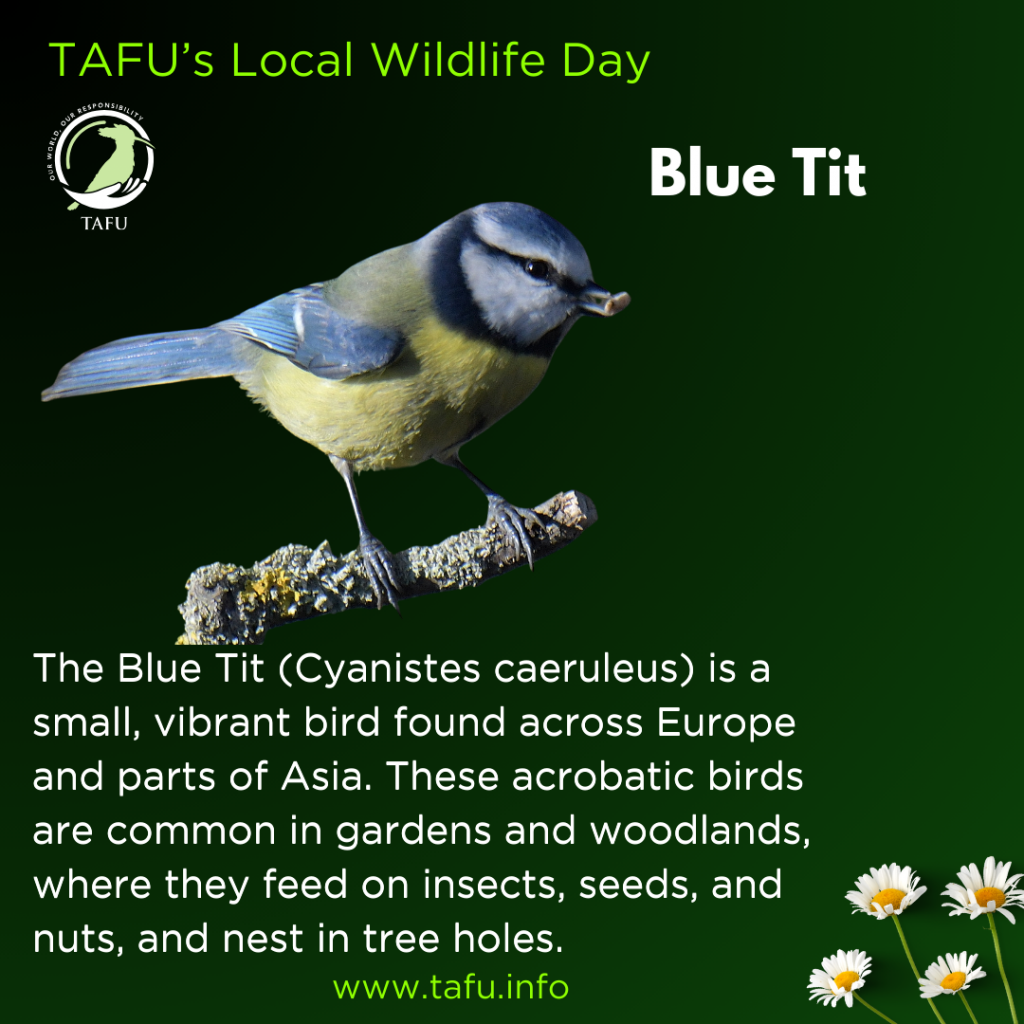Blue Tit
As part of the countdown to TAFU’s Local Wildlife Day on the 11th of July – Species no. 36.
Stay tuned – 7 more days and 7 more species until then!
The Blue Tit (Cyanistes caeruleus) is a small passerine bird, measuring about 12 cm in length with a wingspan of 17-20 cm. Its striking plumage features a mix of bright blue and yellow. The underparts are a vibrant yellow, making it easily recognisable.
Blue Tits are highly adaptable and can be found in a variety of habitats, including deciduous and mixed woodlands, gardens, parks, and hedgerows. They are particularly fond of areas with plenty of trees and shrubs, which provide both food and nesting sites. These birds are known for their agility and acrobatic feeding behaviour, often seen hanging upside down to access food, similar to other tits.
Their diet primarily consists of insects and spiders during the breeding season, which provides essential protein for growing chicks. Outside of the breeding season, Blue Tits have a more varied diet that includes caterpillars, spiders and invertebrates.
Breeding season for the Blue Tit runs from April to early May. They typically nest in natural tree holes. The female lays a large clutch of up to 16 white eggs with reddish-brown spots, which she incubates for about 13-15 days. Both parents are involved in feeding the chicks, which fledge approximately 18-21 days after hatching.
Blue Tits are known for their complex social structure and vocal communication. They have a variety of calls and songs used for different purposes, including attracting mates, signalling alarm, and maintaining contact with their flock.
Planting native trees and shrubs can provide natural food sources and nesting sites for these tits. Reducing pesticide use can help maintain healthy insect populations, which are crucial for Blue Tits during the breeding season.

